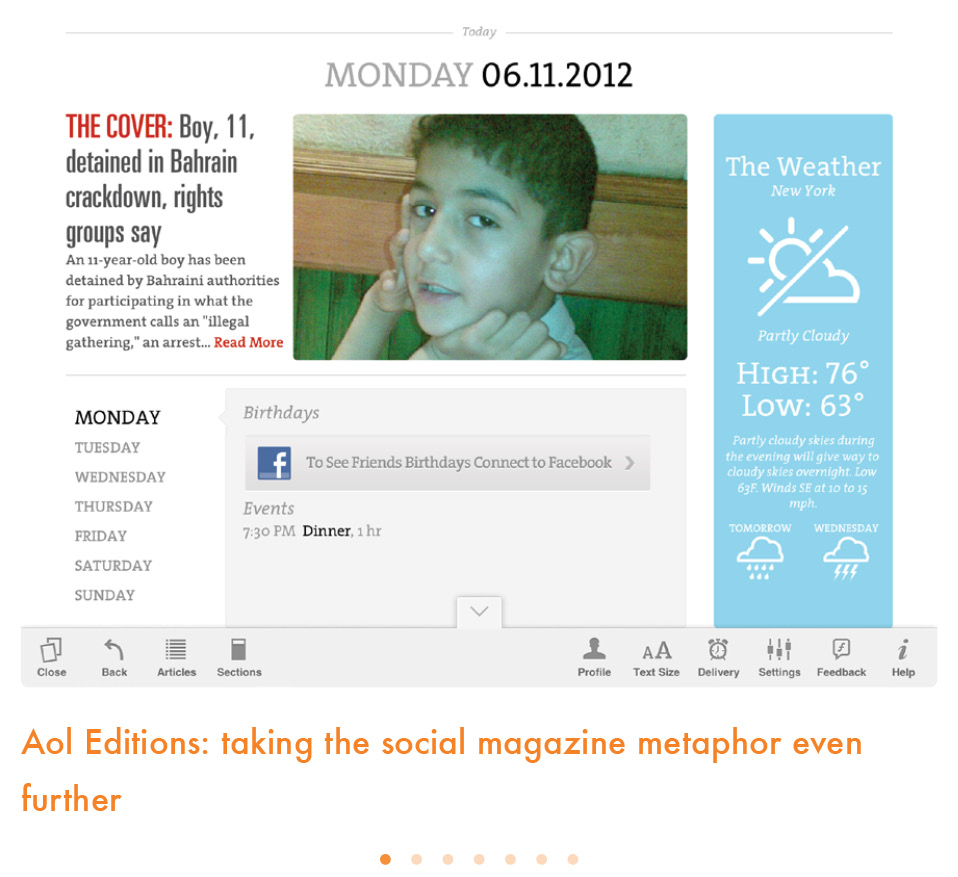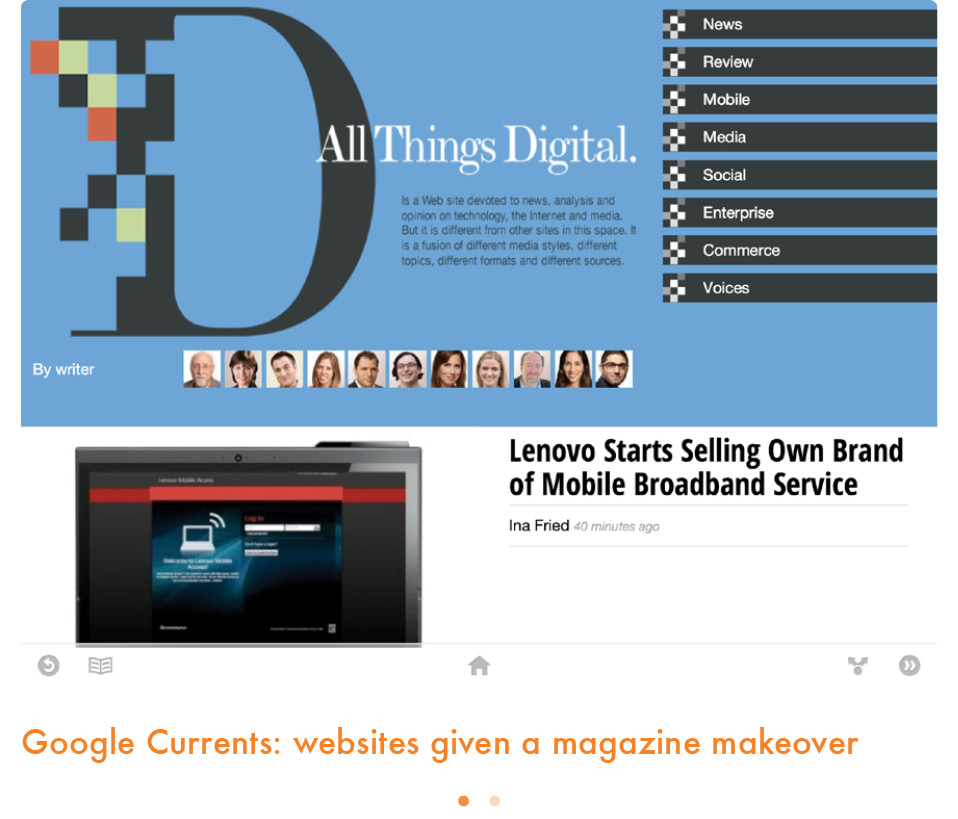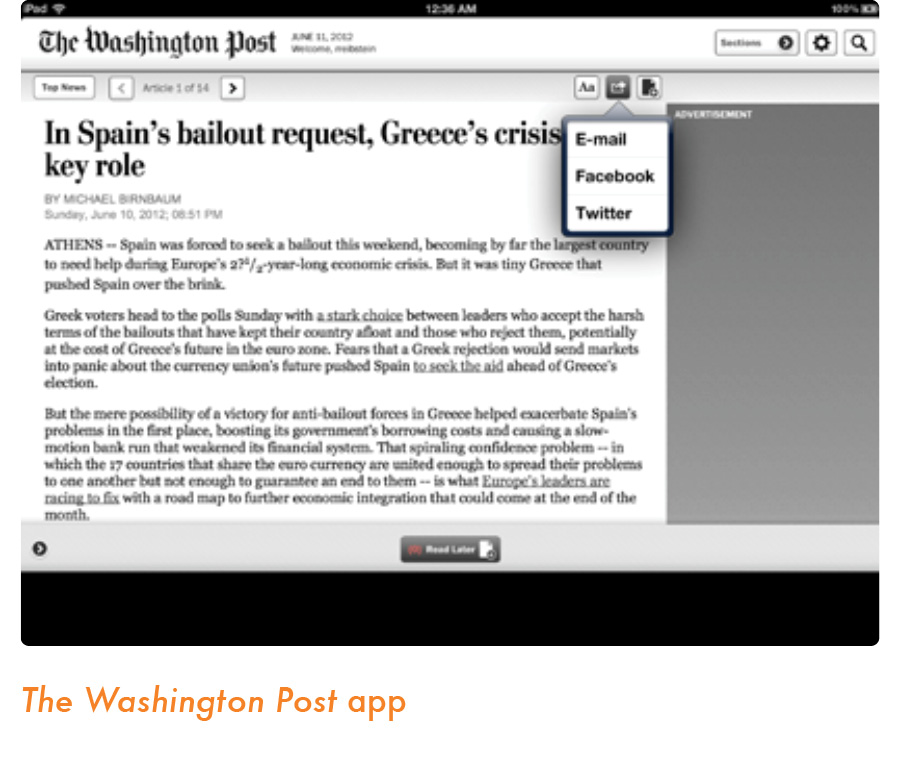3. SOCIAL MEDIA & THE APP
THE TAKEAWAY
The audience congregates in the “central square” that is social media. We must meet them there to learn about their interests, then develop rich storytelling from the experience.
In his provocatively titled piece, “How “Breaking News’ Broke the News,” David Weigel starts with the question, “Does “breaking news’ have any meaning anymore?”
Good question, David, and perhaps we should try to answer it by dusting off our bookshelf and turning to one of the oldest newswriting textbooks, by Lyle Spencer, in which he offered the following definition of news in 1917:
Any accurate fact that will interest a large number of readers, and, of two stories, the accurate one that interests the greater number of people is the better one.
My own definition for 2012 is something like, “Anything you know now that you did not know fifteen minutes ago ... or fifteen seconds ago.”
Nobody questions that breaking news has found a comfortable launching station with Twitter, Facebook and other social media platforms. Everyone armed with a mobile telephone is a reporter, videographer and photographer in one. They are not journalists, however. That function remains with the men and women who have trained to do the job. Although they may not break the news in the old-fashioned sense of the word, they help even those reporting it understand the context behind the events. Real journalism goes beyond a 140-character tweet. In my view, there is no need to worry about the “demise of breaking news” for traditional journalists. The crowd may break the news, but journalists pick it up and run with it.
Most obstetricians who deliver babies do just that. They do not raise them, nurture them and see them grow. Parents do that, in most cases. Let every “obstetrician” out there who is armed with the tools of reporting take care of the delivery, as I am sure they will continue to do. Let the journalists do the rest. A journalist’s job has never been more crucial.
I do not lament the end of breaking news. I celebrate the challenge that this presents to editors, journalists and designers: to surprise beyond the House of Twitter. The role of journalism on the tablet is still being defined, and I have no doubt that it will be a key element of the future journalist’s skill set. We must be up to the task.
MORE ON SOCIAL MEDIA AND THE NEWS
Read The Economist’s summary, “The people formerly known as the audience”: “The role of journalists in this new world is to add value to the conversation by providing reporting, context, analysis, verification and debunking, and by making available tools and platforms that allow people to participate. All this requires journalists to admit that they do not have a monopoly on wisdom.”
SOCIAL MAGAZINES
Although being part of the social media “central square” is not the full task of a journalist, there are a number of intriguing tablet apps that seek to create social-media-powered publications. The best known is Flipboard, which we have covered previously for its influential image-driven style. It uses this style to present links from those a person follows on Twitter, Facebook and elsewhere, creating a more curated and relaxing experience. News.me, Trove, Zite, Aol Editions, TweetMag and Google Currents pursue similar strategies, transforming the bustle of a Facebook news feed, Twitter stream and the hot stories of the moment into a fresh, customized magazine for a user.
INTERVIEW: RAJU NARISETTI, FORMER MANAGING EDITOR, WASHINGTON POST DIGITAL (NOW MANAGING EDITOR, WSJ DIGITAL NETWORK)
I had the privilege of working with Raju on a variety of projects at The Wall Street Journal, Mint (India) and The Washington Post. He is one of those editors with a thorough understanding of storytelling across platforms. This interview was conducted before Raju took his new post at The Wall Street Journal.
MARIO: If you had to summarize The Washington Post’s approach to social media in a tweet, what would that be?
RAJU NARISETTI: To get more people to engage/consume/respond/create—with more @washingtonpost content where they want to, how they want to, when they want to (in 140 characters).
What have you found to be the most effective tools for journalists using social media?
It is less about specific tools—though the usual suspects such as Twitter and Facebook tend to still have a bigger bang for the buck. Because of the rapid change facing the business of journalism, we must have the mind-set that our future is at the intersection of great Washington Post content and relevant technology. It is about creating engaging and compelling experiences for our audiences so they want more of what we do. It is a willingness to embrace change and recognize that in a world where 900 million people are in one place—such as Facebook—we need to go to them instead of expecting them to come to us. Social media tools and tactics help us do that.
Specifically with the Post’s tablet edition, what are some lessons you have learned?
Readers are willing to pay for content that is already available free elsewhere for the sake of either mobility or the experience that tablets can provide if they take advantage of the device form/function. But this requires tablet offerings to be comprehensive, timely, innovative and entertaining. Curation is key, and reliance just on feeds from a website leaves the reader, especially a paying reader, not too satisfied. It is very expensive to create one-off apps for different operating systems. The future of apps (and websites and media organizations, digitally speaking) might lie in HTML5 that creates experiences that can move around devices/platforms. And, finally, do not make two of the biggest mistakes our industry made fifteen years ago: giving away content for free and not creating advertising innovation to go with the platform.
REVIEW QUESTIONS
As you learned in this chapter, pop-ups are essential to a good tablet app; the best are surprising and finger-friendly. Using what you have learned:
- Select a newspaper app and magazine app that each include pop-up moments. Identify two pop-ups in each and explain why you think the respective stories were enhanced by the audio, video or other interactive elements.
- Now turn your attention to news apps where possibilities for pop-up moments are not fully explored. Assuming the role of the news app creative director, select three examples of stories where pop-ups would have enhanced the experience. Explain how you would execute each.
- Finally, select the best news and the best feature pop-ups you have seen in a newspaper. Be prepared to justify your choices.











